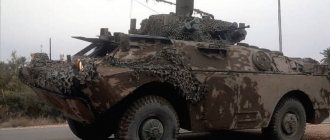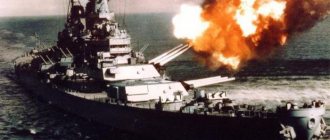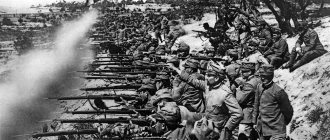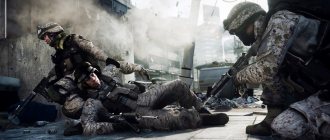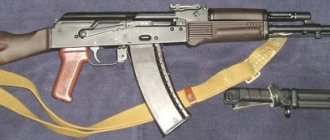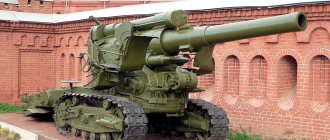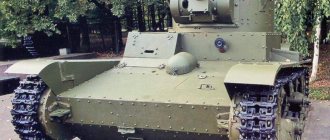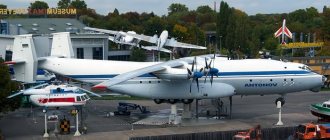In January 1992, the Bosnian Serbs took the first step towards their own statehood by proclaiming the creation of the Republika Srpska within Bosnia and Herzegovina (BiH). The territory of this Balkan state was once home to a single Slavic people, which over time split along religious lines into Orthodox Serbs, Turkified Muslim Bosniaks and Catholic Croats. During the civil war, an alliance of Croats and Bosniaks was formed in these territories of the former Yugoslavia, fighting against the Serbs. As a result, the Republic of Serbia and the Muslim-Croat Federation were formed, united within Bosnia and Herzegovina. Both parts of the new state were cut more or less along ethnic boundaries, have their own constitution, their own president, government, parliament, courts and police - that is, they are actually sovereign powers. Moreover, in each of them there are those dissatisfied with the current state of affairs: among the Serbs and Croats there are many who want to reunite with their fellow tribesmen, that is, with Serbia and Croatia, and Muslim Bosniaks are trying to build a sovereign Islamic democracy. Lenta.ru looked into the difficult history of the creation of the Republika Srpska and its chances in the struggle for independence.
Religious Battlefield
The idea of creating Greater Serbia is far from new - its roots go back to the times when the Serbs lived as part of the Ottoman Empire. They came under her rule back in the 15th century, when the Turks began expansion in the Balkans. By the middle of the 19th century, the idea of liberating the people from Ottoman rule and uniting the South Slavs into a strong state arose among the Serbian elite. Supporters of “pan-Serbism” believed that they would be able to overcome the religious barriers that separate Orthodox Slavs, Catholic Slavs and Muslim Slavs. But it was religion that became the stumbling block over which the supporters of Slavic unity stumbled.
The Serbs, like the Croats, came to the Balkans more than a thousand years ago; these Slavic tribes moved here from the territory of what is now Ukraine at the beginning of the 7th century AD, during the time of the Avar Kaganate. On the territory of present-day Bosnia and Herzegovina, the Slavs quickly assimilated the remnants of the Illyrian tribes. In the book of the Byzantine Emperor Constantine Porphyrogenitus, “On the Administration of the Empire,” written in 948-952, there is a separate chapter “On the Serbs and the country where they live now.” It was there that Bosnia was first mentioned among the Serbian lands.
In the Middle Ages, several Serbian feudal states were created on the lands of present-day BiH, in particular, Banovina (later the Kingdom of Bosnia), the Duchy of St. Sava (Herzegovina). In addition, the north of Bosnia was part of the Kingdom of Hungary (Banovina Usora). But in 1463-1528, all of present-day Bosnia and Herzegovina became part of the Ottoman Empire, and an accelerated process of Islamization of the Slavic population of the region began.
When Bosnia and Herzegovina came under the rule of Austria-Hungary in 1878, 496.8 thousand Orthodox Christians (42.8 percent), 448.6 thousand Muslims (38.7 percent) and 209.4 thousand Catholics (18 percent) lived here. Moreover, the absolute majority of Orthodox Christians were represented by Serbs, Catholics by Croats, and almost all Muslims had Slavic roots.
Already in the 19th century, the Islamized Bosnian Slavs felt themselves to be a special ethnic community both in relation to Christians and in relation to their coreligionists, the Turks, whom, according to the observation of the Russian ethnographer Alexander Hilferding, “they were alienated as infidels.”
Austria-Hungary tried to construct a special “Bosnian identity”, but in the province, on the contrary, the structuring of the population along ethnic lines accelerated. If at first the imperial authorities pursued a relatively mild anti-Serbian policy - resorting, for example, to the resettlement of German and Ruthenian colonists in the Serbian regions of BiH - then since 1914, open repressions against local Serbs began. And after the assassination of Archduke Franz Ferdinand, a wave of pogroms carried out by Muslims swept through the Serbian neighborhoods of Sarajevo and other cities of Bosnia and Herzegovina.
Empty and looted shops owned by Serbs in Sarajevo, 1914
Photo:
With the outbreak of World War I, the Austrians, not relying on the loyalty of the Bosnian Serbs in battles with their fellow tribesmen from Serbia and Montenegro, organized “schutzkor” - auxiliary volunteer units, mainly from Muslims. The task of these units was to prevent a possible guerrilla war in the rear of the imperial army. This goal was achieved mainly through ruthless terror against the Serbian population. The Austro-Hungarian units, staffed by Catholic and Muslim Croats, were also distinguished by their cruelty in the territories of Serbia occupied in 1915-1918.
In turn, this caused a response from the Serbs in 1918-1919. Thus, after the troops of the Kingdom of Serbia entered the territory of Bosnia and Herzegovina (by the way, at the invitation of regional authorities) at the end of November 1918 and until the spring of the following year, repeated robberies of the local population by the Serbian military were recorded.
On December 1, 1918, the territory of Bosnia and Herzegovina became an integral part of the Kingdom of Serbs, Croats and Slovenes, which was transformed into the Kingdom of Yugoslavia in 1929. In this state, a Muslim party was created - the Yugoslav Muslim Organization (YMO), whose electoral base was BiH, and the leader of the YuMO, Mehmed Spaho, was the Minister of Industry and Trade in the government of the kingdom in 1927-1929. At the same time, in the constant conflicts between Croatian politicians and Belgrade, Muslims invariably supported the Croats.
In 1941-1945, the Serbian population of Bosnia and Herzegovina, which the Nazis gave to their allies from the “Independent Power of Croatia” (NDH), was subjected to the most brutal terror - real genocide by the Croatian Ustasha fascists
In dozens of concentration camps, most of which were created by the Ustasha (members of the Croatian fascist far-right organization founded by Ante Pavelic in 1929 in Italy - note from Lenta.ru
) on the territory of BiH, about 800 thousand Serbs were killed. The most famous "death camp" in the NDH is Jasenovac, established in May 1941, where more than half a million Serbs were killed. Although the central administration of this camp was located in what is now Croatia, the main “death conveyors” of the camp operated on the lands of Bosnia and Herzegovina.
The relative small size of the Croatian community in BiH prevented Zagreb from making it the exclusive basis of its power over these lands, so the Ustasha decided to win over local Muslims. They relied on the slogan “Muslims are the flower of the Croatian nation,” put forward by the 19th-century Croatian writer Ante Starčević, who called for the partition of Bosnia and Herzegovina as a separate province of Austria-Hungary to other parts of the Danube Monarchy, where Croats were in the majority.
Thus, Muslims made up about 12 percent of the civil and police personnel of the NDH, as well as the military of this puppet state, and were directly involved in the actions to exterminate the Serbian population of BiH. In addition, the 13th SS Mountain Division “Hanjar” (Turkish for “dagger”) was formed mainly from Muslims in February 1943. Of the 26 thousand soldiers and sergeants of the division, 23.2 thousand were Muslims, and each of its battalions (except for the reconnaissance battalion formed from Germans) had a separate imam.
The Hanjar Division not only fought against the communist partisans led by Joseph Broz Tito, a significant portion of whom were Serbs, but also committed crimes against the Serb civilian population of BiH, killing more than 1,800 people. As Matthias Franya, a member of the division headquarters, later admitted in court, during the raids his subordinates “cut everyone who did not wear a fez.”
209 thousand
Serbs from Bosnia and Herzegovina died during World War II
The direct demographic losses of the Serbian community of BiH during the Second World War are estimated at 360 thousand people. It was after this that the Serbs ceased to be the largest national community in Bosnia and Herzegovina. Therefore, it is not surprising that for local Serbs, fascism was associated precisely with Croatian nationalists, whose allies were Muslims.
However, after the creation of the Socialist Federal Republic of Yugoslavia (SFRY) in 1945, the official propaganda of “brotherhood and unity” tried in every possible way to erase the memories of those tragic episodes; the executioners continued to live in their settlements side by side with the relatives of their victims. According to Swedish politician Carl Bildt, it was this official silence about the atrocities of which the Serbs were victims that played a large role in the rapid escalation of the Bosnian crisis of the early 1990s into confrontation and open war.
But by that time, the national situation in the Socialist Republic of Bosnia and Herzegovina had changed greatly, and in favor of Muslims. Firstly, back in 1961, the term “Muslim” was introduced in the SFRY to mean ethnicity, and in 1968, the Central Committee of the Union of Communists of BiH confirmed that Muslims are a “separate people”, that is, an ethnic group fully equal in rights to the main peoples of Yugoslavia , and not a “nationality” or a national minority. This was accompanied by a redistribution of power in favor of its representatives of the Muslim community.
Given the high birth rate among Muslims, within a decade they will make up almost 60 percent of Bosnia's population
Adil Zulfikarpashichodin from the ideologists of the national movement of Muslims of Bosnia and Herzegovina (1986)
According to the last census of the still socialist Bosnia and Herzegovina, conducted in 1991, Muslims in this union republic were 43.7 percent, Serbs - 31.4 percent, Croats - 17.3 percent, other nationalities - 2.1 percent and Yugoslavs without ethnicity - 5.5 percent (more than in any other republic of the SFRY).
↑ Results of the Balkan Wars
- New states were formed on the lands of the former Ottoman Empire. Among them was Albania, which gained independence on November 28, 1912.
- Bulgaria, Serbia, Romania and Greece significantly increased their territories.
- At the same time, the Balkan Wars were a prerequisite for the First World War. Serbian nationalists Gavrilo Princip and Nedeljko Čabrinović assassinated Crown Prince Franz Ferdinand in Sarajevo, intending to achieve the separation of Bosnia from Austria-Hungary and annex it to Greater Serbia. This act became the formal beginning of the war.
- Several “hot spots” populated by warring national factions have formed in the Balkans. Conflicts in these areas do not subside to this day, as they are supported by world powers and political blocs.
Fight for rights
In the fall of 1990, the first free elections to local parliaments on a multi-party basis were held in all republics of the SFRY, in which completely new forces that took shape during 1990 won. In Bosnia and Herzegovina, these were the national parties: Muslims (Party of Democratic Action, SDA), Croats (Croatian Democratic Community, HDZ) and Serbs (Serbian Democratic Party, SDP).
Of course, intercommunal tensions had previously played an important role in the life of Bosnian society, but the communist regime actively fought against all attempts by intellectuals to put national problems at the forefront. But, as the famous Russian Balkanist Georgy Engelhardt notes, only the political liberalization of 1990 gave the national intelligentsia in Bosnia and Herzegovina the opportunity to structure themselves and carry out political mobilization under national slogans.
Unfortunately, this mobilization almost from the first day acquired an anti-Serbian character
In the spring of 1990, the first multi-party democratic elections were held in Croatia, and on May 30, 1990, the Croatian Parliament was formed based on the results of the vote
Photo: National Assembly of the Republic of Serbia
This is not surprising, because SDA leader Aliya Izetbegovic wrote in his “Islamic Declaration” back in 1970: “Islamic order can only be established in those countries where Muslims make up the majority of the population. Otherwise it will come down to intentions.” Therefore, the election of Izetbegovic as chairman of the Presidium of BiH with the support of the Croats in 1990 was regarded by the Serbs as an immediate threat.
Since April 1991, the process of so-called regionalization began in BiH - the unification of communities controlled by the SDP into the Serbian Autonomous Regions (SAO). The largest of them were the Bosnian Krajina and Eastern Herzegovina, later the Northern Bosnia (with its center in Doboj) and Birac (it included Serbian settlements in the Drina valley, in Muslim-majority communities).
In October 1991, Muslim and Croat deputies in the Assembly (parliament) of the Socialist Republic of Bosnia and Herzegovina actually carried out a coup. Thus, the Constitution of this union republic stated that it is “a sovereign democratic state of the peoples of Bosnia and Herzegovina - Muslims, Serbs, Croats and representatives of other nations.” However, on October 12, 1991, deputies from the SDA and HDZ, in the absence of their Serbian colleagues, adopted the “Memorandum on the Sovereignty of Bosnia and Herzegovina,” in which Muslims and Croats were presented as state-forming peoples, and Serbs as a minority, effectively reduced to an ethnic-cultural group. At the same time, Serbs in BiH made up almost a third of the population, there were almost twice as many of them as Croats.
After this, the split of Bosnia and Herzegovina became inevitable. On October 24, 1991, in the city of Pale near Sarajevo, deputies of the BiH parliament from the SDP and other Serbian political parties proclaimed the creation of the Assembly of the Serbian people of Bosnia and Herzegovina and the transfer to the authority of this body of all Serbian autonomous regions of the republic. The deputies also adopted the “Declaration on the preservation of the Serbian people in the united state of Yugoslavia.” Serbs living in BiH supported this declaration with an overwhelming majority in a referendum on November 9-10, 1991: 85 percent of Bosnian Serbs took part in the plebiscite.
98%
Those who voted in a referendum in November 1991 were in favor of maintaining the Serbian part of Bosnia and Herzegovina as part of Yugoslavia
President of Bosnia and Herzegovina Alija Izetbegovic, accompanied by General Rasim Delic (right) and Sakib Makhmulin (left), greet those present at the military parade
Photo: Peter Andrews/Reuters
It was on the basis of the results of the expression of popular will that the Assembly of the Serbian People in BiH on January 9, 1992, on the basis of the SAO, proclaimed the creation of the Republika Srpska (RS) within BiH, and itself as the People's Assembly (parliament) of the RS. By the way, the current member of the Presidium of BiH from the Serbian people, and then a deputy from the Serbian “reformists” Milorad Dodik, also voted for these decisions, that is, he is one of the few active politicians who stood at the origins of the Republika Srpska.
On February 28, 1992, the Constitution of the Republika Srpska was adopted, the government of the RS was approved and its presidium (a kind of collective president) was elected, consisting of Radovan Karadzic, Biljana Plavsic and Nikola Kolyevich. At the same time, in fact, from the first days the republic was led by Radovan Karadzic - as the leader of the SDP, which had an overwhelming majority of votes in the Assembly of the RS.
Big blood
From the first days of its existence, Republika Srpska found itself in a state of war with Muslim militants, into whose hands the President of Bosnia and Herzegovina Alija Izetbegovic transferred weapons from territorial defense warehouses - after all, this structure, unlike the Yugoslav People's Army (JNA), was under the leadership of the republican leadership . In addition, Serbs were expelled from units of the Ministry of Internal Affairs (MVD) outside the Northern Administrative District, forming a de facto Muslim army from the local police.
On February 29 - March 1, 1992, a referendum on the independence of Bosnia and Herzegovina took place, which was boycotted in all the Northern Administrative Okrug - voting stations were not even open there. The process of secession of the next republic from Yugoslavia was openly supported by Germany, which had previously lobbied for recognition of the independence of Slovenia and Croatia.
The proclamation of the Republic of Bosnia and Herzegovina was planned for April 6, 1992, and the day before, on April 4-5, Muslim militants carried out an armed putsch in Sarajevo
They not only captured most of the administrative buildings and blocked parts of the JNA, but also began punitive operations against the civilian Serb population of Sarajevo, which later spread to other settlements controlled by Muslims. At the same time, a concentration camp for Serbs was created at the Koševo stadium, known throughout the world for the opening ceremony of the 1984 Winter Olympic Games. And the first peaceful Serbs were killed by Muslim militants from the Green Berets group on March 1, 1992 - then a wedding ceremony was shot near the Orthodox Church in Bascarsija (the old bazaar in Sarajevo).
At first, the Republika Srpska had to rely only on volunteer and police units, since parts of the JNA maintained demonstrative neutrality for quite a long time. Only after the treacherous attacks by Muslim militants on army columns in Sarajevo and Tuzla in May 1992, the situation changed, the Army of the Republika Srpska was created, to which the JNA transferred part of the weapons (a significant part was still taken to Serbia). General Ratko Mladić, previously the commander of the Second District of the JNA, became the commander of the RS Army. It was this fact that later allowed Muslims and Croats of BiH, as well as the West and the Islamic world, to accuse Yugoslavia of “aggression” against “democratic Bosnia and Herzegovina.”
Muslim militia take cover in a trench during renewed heavy fighting with Serb forces in Sarajevo, June 6, 1992.
Photo: Hhidajet Delic/AP
Moreover, we were talking about a new, “cut down” Yugoslavia, no longer socialist, which Serbia and Montenegro created on the ruins of the SFRY on April 27, 1992. This state, the Federal Republic of Yugoslavia (FRY), fully agreed with the opinion of the International Arbitration Commission established in Brussels that only the former Yugoslav federal republics could lay claim to independence.
Even the autonomous territories that existed under the SFRY (Kosovo and Vojvodina in Serbia), not to mention the self-proclaimed Serbian autonomies on the territory of Croatia and Bosnia and Herzegovina, did not receive such a right - and Belgrade accepted this, without making territorial claims to the former Soviet republics
Thus, the Republika Srpska did not join the Federal Republic of Yugoslavia, and in August 1992 set a course for complete independence, removing “as part of Bosnia and Herzegovina” from its name. In December 1992, the post of president was introduced, which was taken by Radovan Karadzic.
By that time, a full-fledged war of “all against all” was already raging on the territory of Bosnia and Herzegovina: for example, the Croats of BiH, a few months before the local Serbs, proclaimed the creation of their autonomy Herze-Bosna, the territory of which they also tried to expand by armed means. It is worth noting that for BiH Muslims this war has acquired the character of jihad. Thousands of Islamic militants from all over the world fought in the army units of the Republic of Bosnia and Herzegovina, including representatives of Al-Qaeda (a terrorist group banned in Russia
). Moreover, in 1994, Osama bin Laden personally came to Sarajevo and met with Alija Izetbegovic - and he came with a passport that was issued to him by the Bosnia and Herzegovina embassy in Austria.
But the Serbs of Bosnia and Herzegovina call the war of 1992-1995 a defensive liberation war, and they defended themselves not only from Muslims and Croats, but also from the West
For example, the UN armed contingent in Bosnia and Herzegovina (UNPROFOR) openly supported Muslims. In Serb-controlled territory, UNPROFOR created three Muslim enclaves - in Bihac, Gorazde and Srebrenica. Under the protection of the “peacekeepers” there were not only the civilian population, but also units of the army of the Republic of BiH, which regularly made forays into the surrounding Serbian villages - and returned back after the massacre of the civilian population.
Similar attacks by Naser Oric's militants from Srebrenica overwhelmed the patience of the RS Army (in total, more than 3.5 thousand Serb civilians were killed in the surrounding villages), and in July 1995, General Ratko Mladic gave the command to occupy this enclave. The entire peaceful Muslim population of Srebrenica was transported on buses provided by the Serbs to the Gorazde enclave, and Oric’s militants tried to fight their way there. Most of them died, but several thousand were captured.
More than two thousand Muslim prisoners in Srebrenica were shot, which is, of course, a war crime - and this is recognized in the Republika Srpska
Actually, in 1995, both Muslims and the West also considered this only a war crime, and not “genocide” at all. But the main thing that the West understood after the events in Srebrenica is that the Serbs will no longer adhere to false rules of war. Indeed, in the “protected zones”, in addition to Muslim militants, there were also American and British special forces, directing NATO bombers at the positions of the RS Army. Washington and Brussels put pressure on Muslims and Croats, who stopped internecine clashes and, with the support of NATO aircraft, launched a joint offensive against the Serbs.
Evacuation from the besieged Muslim enclave of Srebrenica, March 29, 1993
Photo: Michel Euler/AP
The Republika Srpska risked repeating the fate of the Serbian Krajina, destroyed by Croatian troops in August 1995 during Operation Storm, the largest ethnic cleansing in Europe after World War II (at which time more than 300 thousand Serbs were expelled from Croatia). The RS authorities were forced to negotiate and agree that the Serbs would get only 49 percent of Bosnia and Herzegovina (although during the war the RS Army controlled up to 80 percent of the territory of BiH). This was also prompted by the position of Yugoslavia, which in 1994 imposed sanctions against the Republika Srpska.
The Dayton Peace Agreement, signed on December 14, 1995, led to the end of the war and the recognition of the Republika Srpska as one of the two entities of Bosnia and Herzegovina (the other was the Muslim-Croat federation), as well as the recognition of the Serbs as one of the three state-forming peoples of BiH - along with Croats and Muslims -Bosniaks. The Republika Srpska received broad powers, but Sarajevo and the West never hid their plans to transform Bosnia and Herzegovina into a unitary state with Muslim dominance.
It was after 1992 that the Muslims of Bosnia and Herzegovina were renamed Bosniaks to emphasize their claims to the entire territory of the state. Hypocritically accusing the Serbs of ethnic cleansing, Muslims ensured that the Serbs were forced to leave those areas of Sarajevo that were under their control in 1992-1995. Thus, almost 100 thousand Sarajevo Serbs became exiles.
3,6%
Serbs live in the territory of the Muslim-Croat Federation of Bosnia and Herzegovina, according to the 2013 census
End of fighting in Kosovo
From this point on, there were no major battles in Kosovo, but minor conflicts flared up from time to time.
From the very beginning of the NATO military operation against Yugoslavia, Russia tried to politically resist the United States and NATO countries. But all efforts were in vain. Then the high military command of the Russian Federation developed a special operation to covertly penetrate into the territory of Kosovo and take control of the Slatina .
Popular articles: Fidel Castro died at the age of 90. Facts from the life of the Comandante
Thin world
In fact, from the first days of the implementation of the Dayton Peace Agreement, attempts by the West began to deprive the Republic of Srpska of its subjectivity and territory. Thus, the district of Brčko, which was supposed to be divided between the RS and the Muslim-Croat Federation, was transferred under direct “international control” in February 1997, and the Serbs lost the physical coherence of their territories. And in March 1999, the Brcko district was proclaimed a separate administrative-territorial unit, not included in any of the entities - while in fact it completely came under the control of Muslims.
Also in 1999, the High Representative to Bosnia and Herzegovina—an official appointed by the Dayton guarantor countries and approved by the UN Security Council—was given the so-called “Bonn powers.” It was about his right to terminate the powers of any politician or official in BiH and introduce laws with his sole decision. In the vast majority of cases, these powers were used against the Serbs.
Thousands of Bosnian Muslims gather for the opening ceremony of the King Fahd bin Abdulaziz Mosque in Sarajevo, September 15, 2000.
Photo: DS/CRB/Reuters
In the conditions of such unprecedented pressure and blackmail, the authorities of the Republika Srpska in 2003-2005 were forced to “voluntarily” transfer powers in the field of defense and security, justice and taxation to the level of the central government of Bosnia and Herzegovina. The Dayton Agreement assigned the right to their own army and security service, judicial system and tax service to the entities of BiH, and in the Constitution of Bosnia and Herzegovina the central authorities of this country do not have such powers. In addition, in recent years, the Constitutional Court, which is one-third composed of foreigners, has ruled that forests and agricultural land on the territory of Republika Srpska are the property of the center.
But the Serbs of Bosnia and Herzegovina suffered the most painful defeat in the information war that the West continued against them
As Russian political scientist Oleg Bondarenko noted, it was at the request of Western politicians that the myth of the “genocide in Srebrenica” was invented in the bowels of the New York consulting firm Ruder-Finn Global Public Affairs. Its former director, James Harf, told French journalist Jacques Merlino about how he managed to demonize the Serbs in a short time.
Our job is not to verify information. Our job is to speed up the circulation of information beneficial to our client, with clear targeting. We presented the Serbs as Nazis of the Second World War - and hit the mark, right on target! They immediately started talking about ethnic cleansing, about the gas chambers of Auschwitz
James Harf, former director of the American consulting firm Ruder-Finn Global Public Affairs
Relatives of those killed in the 1995 Srebrenica massacre bury the remains of their loved ones in a town field, March 31, 2003.
Photo: Reuters
The Washington-controlled International Court of Justice on February 26, 2007 recognized that the massacre of Bosnian Muslims in Srebrenica in July 1995, committed by the Army of the Republika Srpska, was an “act of genocide.” However, the judges nevertheless noted that, in accordance with international norms on state responsibility, he cannot blame Serbia for these acts - thus disavowing statements about “Serbian aggression” in BiH.
The West tried to “build on the success”, and in July 2015, the UK proposed a draft UN Security Council resolution in which the events in Srebrenica were characterized as genocide, of which the entire Serbian people were actually called the perpetrators. However, Russia vetoed this project. “The document as presented is unacceptable due to its political motivation, imbalance, and detrimental nature for the process of national reconciliation in Bosnia and Herzegovina and the Balkans as a whole. The blame for the events that took place would actually be placed solely on the Serbian side, without taking into account the fact that the Serbs themselves also became victims of that tragedy,” Vitaly Churkin, Russia’s then permanent representative to the UN, said at the meeting.
If you look at the outcome of the entire, essentially ten-year conflict on the territory of the former Yugoslavia, when hundreds of thousands of Serbs were expelled from their places of traditional residence, then one cannot help but come to the conclusion that they suffered at least as much as others
Vitaly ChurkinFormer permanent representative of Russia to the UN in New York
However, in the West they persist in their desire to label the Serbs as a genocidal people. In July 2022, a few days before the expiration of his powers, the High Representative in BiH, Valentin Inzko, introduced a law “prohibiting the denial of genocide” - not only without hiding, but also emphasizing its anti-Serbian orientation. The German politician Christian Schmidt, who arrived in Sarajevo to replace him, whose powers as High Representative were not confirmed by the UN Security Council - and therefore are not recognized, in particular, by Russia and China - continued the anti-Serbian policy of his predecessor.
But this unprecedented pressure produced the opposite result. Firstly, Serbian representatives in the central bodies of Bosnia and Herzegovina (parliament, Council of Ministers, Presidium) refuse to participate in decision-making until Fr. According to the Dayton system of governance in BiH, the absence of votes from representatives of at least one of the state-forming peoples makes decision-making impossible. Secondly, in December 2022, the People's Assembly of the Republika Srpska instructed the RS government to prepare laws within six months to return powers to the republic in the fields of defense and security, justice and taxation. Actually, it was after this that headlines like “Bosnian Serbs are recreating the army and preparing for war!” appeared in the Western media.
***
So far, the actions of the authorities of the Republika Srpska and the member of the Presidium of BiH from the Serbian people, Milorad Dodik, are more like bargaining. For example, the entity’s budget for 2022 does not include a single euro for the exercise of powers, which the republic seems to want to return from the level of the central authorities of Bosnia and Herzegovina.
Even the solemn parade on the occasion of the 30th anniversary of the Republika Srpska, which took place on January 9 in Banja Luka, now the main city of the Republika Srpska, was fundamentally called a “procession” by the authorities, emphasizing its peaceful nature
True, the main participants in the parade were still units of the Ministry of Internal Affairs of the Republika Srpska, who marched with automatic weapons. And the public’s particular delight was caused by the passage of a convoy of a special anti-terrorist unit in “Despot” armored vehicles, which are produced in the city of Bratunac near Srebrenica.
But although only veterans of the Republika Srpska Army took part in the procession, everything could change in a year. It is not for nothing that during the celebration of Republika Srpska Day on January 9, 2022, the then Patriarch of Serbia Irinej declared that “now we have gathered to glorify the newest state of the Serbian people.”
↑ First Balkan War
The new Balkan states that gained independence realized that they would have to defend it only together: the weakened but not disappeared Ottoman Empire could absorb them back; Moreover, the then world powers - Austria-Hungary, Russia, etc. - had their eyes on the small principalities and republics.
1 Balkan War photos
Therefore, the four Balkan states formed an alliance that fought against a single enemy - the Ottoman Empire. All countries of the Balkan Union wanted to conquer new territories for themselves from the Turks, but in some cases their interests overlapped.
Echoes of this are still noticeable: thus, Greece, Bulgaria, and Albania historically consider Macedonia to be their region, while the Macedonians themselves insist on the independence and identity of their country.
